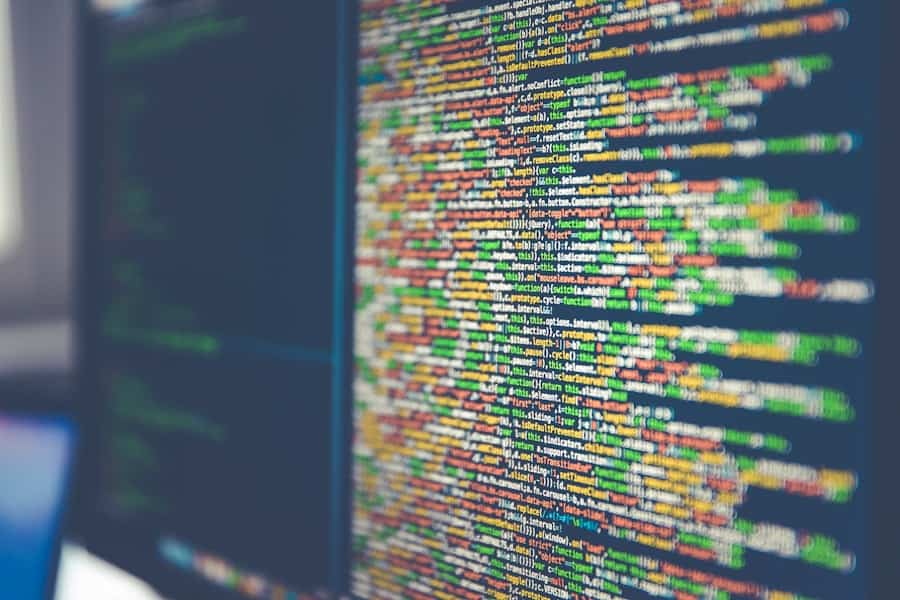Predictive policing technologies represent a significant evolution in law enforcement practices, leveraging data analytics and advanced algorithms to forecast criminal activity. These systems analyze vast amounts of data, including historical crime reports, social media activity, and even environmental factors, to identify patterns and predict where crimes are likely to occur. The goal is to allocate police resources more effectively, allowing law enforcement agencies to prevent crime before it happens rather than merely responding to incidents after they occur.
This proactive approach has garnered attention for its potential to enhance public safety and improve the efficiency of police operations. The implementation of predictive policing technologies has been met with both enthusiasm and skepticism. Proponents argue that these tools can lead to a more strategic deployment of police resources, potentially reducing crime rates and improving community safety.
For instance, cities like Los Angeles and Chicago have adopted predictive policing software to analyze crime trends and allocate patrols accordingly. However, critics raise concerns about the implications of relying on algorithms that may not fully account for the complexities of human behavior and societal dynamics. As these technologies become more integrated into law enforcement practices, it is crucial to examine their impact on society, particularly regarding ethical considerations and the potential for bias.
Key Takeaways
- Predictive policing technologies use data and algorithms to forecast potential criminal activity and allocate resources accordingly.
- AI plays a crucial role in predictive policing by analyzing large amounts of data to identify patterns and trends in criminal behavior.
- Ethical concerns in predictive policing technologies include privacy violations, potential for abuse, and lack of transparency in decision-making processes.
- Bias and discrimination in AI-powered predictive policing can result from biased data, flawed algorithms, and unequal enforcement practices.
- Transparency and accountability are essential in AI ethics to ensure that predictive policing technologies are used responsibly and in line with legal and ethical standards.
The Role of AI in Predictive Policing
Identifying Crime Hotspots
AI can analyze crime reports over time to identify areas with a high likelihood of criminal activity, allowing police departments to allocate resources more effectively. This targeted approach enables law enforcement to concentrate their efforts on areas that need it most.
Real-Time Data Analysis
Moreover, AI can enhance predictive policing by incorporating real-time data feeds, such as social media activity or emergency calls, into its analyses. This dynamic approach allows law enforcement to adapt quickly to changing circumstances and emerging threats.
Addressing Concerns and Limitations
While AI offers significant advantages in terms of efficiency and effectiveness, it also raises important questions about the reliability of the data being used and the potential consequences of algorithmic decision-making. As AI continues to play a larger role in predictive policing, it is essential to address these concerns and ensure that the technology is used in a responsible and transparent manner.
Ethical Concerns in Predictive Policing Technologies
The integration of predictive policing technologies into law enforcement raises a host of ethical concerns that warrant careful consideration. One primary issue is the potential for infringing on civil liberties and privacy rights. As police departments increasingly rely on data collection from various sources—ranging from surveillance cameras to social media—there is a growing fear that individuals’ privacy may be compromised.
The use of such technologies can lead to a surveillance state where citizens are constantly monitored, raising questions about the balance between public safety and individual rights. Additionally, the ethical implications of algorithmic decision-making must be scrutinized. Predictive policing relies heavily on historical data, which may reflect systemic biases present in society.
If these biases are not addressed, they can be perpetuated and even exacerbated by AI systems. For example, if historical crime data disproportionately represents certain communities due to over-policing or socio-economic factors, the algorithms may unfairly target those same communities in future predictions. This cycle can lead to a self-fulfilling prophecy where marginalized groups face increased scrutiny and policing based on flawed data interpretations.
Bias and Discrimination in AI-Powered Predictive Policing
Bias in AI-powered predictive policing is a critical concern that has garnered significant attention from researchers, policymakers, and civil rights advocates. The algorithms used in these systems are only as good as the data they are trained on; if that data contains biases—whether explicit or implicit—the resulting predictions will likely reflect those same biases. For instance, if a predictive policing model is trained on historical arrest data that disproportionately targets certain racial or ethnic groups, it may continue to recommend increased police presence in those areas, perpetuating a cycle of discrimination.
Several studies have highlighted instances where predictive policing tools have led to biased outcomes. In 2016, a report by the American Civil Liberties Union (ACLU) revealed that predictive policing algorithms used in various cities often relied on flawed data that overrepresented minority communities as crime hotspots.
Addressing bias in predictive policing requires a multifaceted approach that includes diversifying training datasets, implementing fairness audits, and involving community stakeholders in the development and deployment of these technologies.
Transparency and Accountability in AI Ethics
Transparency and accountability are essential components of ethical AI practices in predictive policing. As these technologies become more prevalent in law enforcement, it is crucial for agencies to be transparent about how their algorithms function and the data they utilize. This transparency fosters public trust and allows for independent scrutiny of the systems in place.
Without clear communication about how predictive policing tools operate, there is a risk that communities will perceive them as opaque black boxes that operate without oversight. Moreover, accountability mechanisms must be established to ensure that law enforcement agencies are held responsible for the outcomes of their predictive policing efforts. This includes implementing regular audits of algorithmic performance and outcomes to identify any biases or inaccuracies that may arise over time.
Additionally, agencies should be required to report on the effectiveness of their predictive policing initiatives, including metrics related to crime reduction and community impact. By prioritizing transparency and accountability, law enforcement can work towards building trust with the communities they serve while ensuring that their use of technology aligns with ethical standards.
Community Trust and Public Perception
Building Trust through Proactive Engagement
Building trust requires proactive engagement with community members throughout the development and deployment process. Law enforcement agencies must communicate openly about how predictive policing works, its intended benefits, and the safeguards in place to protect civil liberties.
Addressing Concerns through Community Involvement
Community involvement is crucial for addressing concerns related to bias and discrimination in predictive policing. Engaging with local organizations, advocacy groups, and residents can provide valuable insights into community needs and perspectives on law enforcement practices.
Fostering Collaboration and Transparency
For example, some police departments have established community advisory boards to facilitate dialogue between officers and residents regarding the use of technology in policing. By fostering an environment of collaboration and transparency, law enforcement can work towards rebuilding trust with communities that may have historically felt marginalized or targeted by policing practices.
Legal and Regulatory Implications of AI Ethics in Predictive Policing
The legal landscape surrounding AI ethics in predictive policing is complex and evolving. As these technologies become more integrated into law enforcement practices, there is an increasing need for clear regulations that govern their use. Current laws may not adequately address the unique challenges posed by AI-driven systems, leading to potential gaps in accountability and oversight.
Policymakers must consider how existing legal frameworks can be adapted or expanded to address issues related to privacy rights, discrimination, and algorithmic accountability. One potential avenue for regulation is the establishment of guidelines for data collection and usage in predictive policing. This could include requirements for obtaining informed consent from individuals whose data is being collected or mandates for regular audits of algorithmic performance to ensure fairness and accuracy.
Additionally, there may be a need for legislation that explicitly prohibits discriminatory practices in predictive policing based on race, ethnicity, or socio-economic status.
Future Directions for Ethical AI in Predictive Policing
Looking ahead, the future of ethical AI in predictive policing will likely involve a combination of technological advancements and regulatory frameworks designed to mitigate bias and enhance accountability. As machine learning techniques continue to evolve, there is potential for developing more sophisticated algorithms that can better account for social dynamics and reduce reliance on biased historical data. Researchers are exploring methods such as fairness-aware machine learning that aim to create models capable of making equitable predictions while minimizing discriminatory outcomes.
Furthermore, collaboration between law enforcement agencies, technologists, ethicists, and community stakeholders will be essential for shaping the future of predictive policing technologies. By fostering interdisciplinary partnerships, stakeholders can work together to develop best practices for implementing AI ethically within law enforcement contexts. This collaborative approach can help ensure that predictive policing serves its intended purpose—enhancing public safety—while respecting individual rights and promoting social justice.
As society grapples with the implications of AI-driven technologies in law enforcement, ongoing dialogue about ethical considerations will be crucial. Engaging diverse perspectives will help create a more comprehensive understanding of how predictive policing can be implemented responsibly while addressing concerns related to bias, discrimination, transparency, and accountability. The path forward will require vigilance and commitment from all stakeholders involved to ensure that technological advancements align with societal values and ethical principles.
In a related article discussing the importance of ethical considerations in technology, “Boost Your Content with NeuronWriter SEO NLP Optimization” explores how artificial intelligence can be used to enhance content creation and optimization. This article highlights the potential benefits of utilizing AI in improving search engine rankings and increasing online visibility. By incorporating ethical principles into the development and implementation of AI technologies, such as in predictive policing, we can ensure that these tools are used responsibly and ethically. To learn more about the intersection of AI and ethics, check out this article.
FAQs
What is AI ethics in predictive policing technologies?
AI ethics in predictive policing technologies refers to the ethical considerations and principles that govern the use of artificial intelligence in law enforcement. This includes ensuring fairness, accountability, transparency, and the avoidance of bias in the development and deployment of predictive policing algorithms.
Why is AI ethics important in predictive policing technologies?
AI ethics is important in predictive policing technologies because the use of AI in law enforcement has the potential to impact individuals’ rights, freedoms, and privacy. Ensuring ethical considerations are integrated into the development and use of predictive policing technologies helps to mitigate the risk of bias, discrimination, and misuse of power.
What are the potential impacts of AI ethics in predictive policing technologies?
The impact of AI ethics in predictive policing technologies can include the reduction of bias in law enforcement decision-making, increased transparency and accountability in the use of predictive algorithms, and the protection of individuals’ rights and privacy. Ethical considerations can also help build trust between law enforcement agencies and the communities they serve.
How can AI ethics be integrated into predictive policing technologies?
AI ethics can be integrated into predictive policing technologies through the development and implementation of ethical guidelines, standards, and best practices for the use of AI in law enforcement. This can include conducting bias assessments, ensuring algorithmic transparency, and involving diverse stakeholders in the design and deployment of predictive policing technologies.
What are some challenges in implementing AI ethics in predictive policing technologies?
Challenges in implementing AI ethics in predictive policing technologies can include the complexity of algorithmic decision-making, the potential for unintended consequences, and the need for ongoing monitoring and evaluation of predictive policing systems. Additionally, addressing bias and discrimination in AI algorithms can be a significant challenge.



